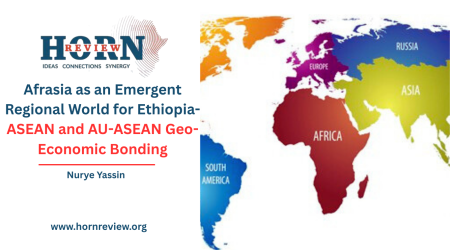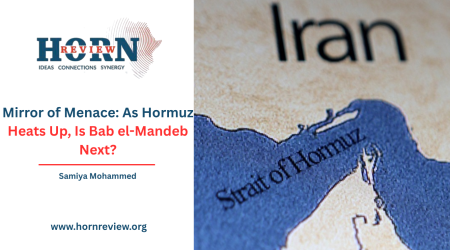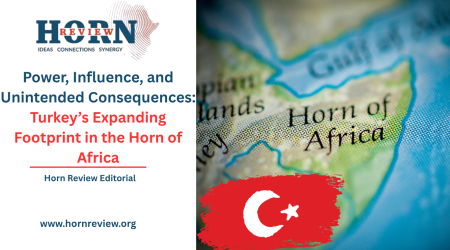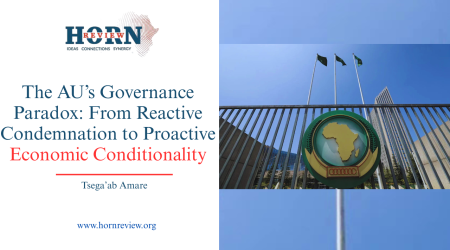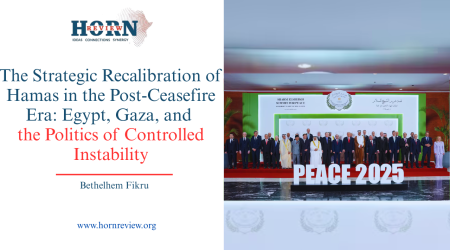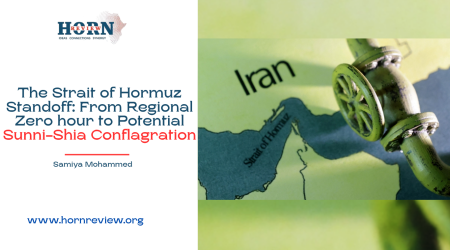
7
Aug
The Samson Option & the Coming Storm: Israel’s Nuclear Doctrine Meets Global Reality
While much of the world spends its time debating Iran’s nuclear capability and asking whether Tehran is about to acquire a bomb, Israel already possesses nuclear weapons, and this fact rarely sparks a major political debate. Israel is one of the few nations believed to have a nuclear arsenal, although it has never officially confirmed its status. Despite Israel’s advanced Iron Dome defenses (which cannot intercept every Iranian missile), any perceived existential threat to Israel would trigger far-reaching consequences. This posture reflects Israel’s “never again” doctrine or the so-called Samson option, a clear commitment to defend itself at any cost. Yet, as regional tensions rise, one must now ask: Is Israel’s nuclear deterrent merely symbolic, or could it soon become a real and terrifying option?
Following the renewed outbreak of the Israel-Palestinian conflict in 2024, the Middle East has plunged into a new phase of militarized confrontation. What began as a familiar standoff between Israel and Hamas quickly expanded into a multi-front war involving Hezbollah, the Houthis, and Iran-backed militias in Iraq and Syria. Once strategic allies during the Shah’s reign, Iran and Israel are now bitter enemies, by making it direct and proxy attacks increasing in frequency. The conflict’s reach now extends far beyond the region, as global power is fragmented into different polarized blocs: Nations like Pakistan, Turkey, China, and others have expressed alignment with Iran’s position, while the United States, the UK, France, and other Western powers continue to back Israel diplomatically and militarily. Militant groups have grown bolder, and their coordinated drone and missile strikes are no longer isolated incidents but part of a widening war pattern.
This is no longer a local war; it’s a proxy war with global dimensions. Fragile but strategically vital regions such as the Strait of Hormuz, the Horn of Africa, the Gulf of Aden, and the Red Sea are rapidly becoming volatile battlegrounds. These waterways are essential to global shipping, energy flows, and regional diplomacy. Their disruption would have serious implications not just for the Middle East but for global trade and economic stability, particularly for nations like Ethiopia, Eritrea, and Djibouti. The recent Houthi attacks on commercial vessels have already provoked a multinational response: joint U.S.–U.K. naval operations, increased patrols by India and China near Djibouti, and heightened military readiness. As militarization accelerates, the risk of chokepoint blockades increases. If these maritime lifelines are compromised, trade and energy supplies, especially for landlocked and dependent nations, could face devastating interruptions.
At the center of growing global concern is the reemergence of Israel’s most controversial security doctrine: the Samson Option. This concept, believed to be Israel’s strategy for last-resort massive retaliation involving nuclear weapons, is named after the biblical figure Samson, who brought down the Philistine temple walls, killing himself and his enemies in one final act of vengeance. The doctrine’s message is clear: if Israel is brought to the edge of collapse, it will ensure its enemies fall with it. Much like Russia’s “Dead Man’s Hand,” the doctrine suggests that total annihilation remains a live option.
The previous conflict, where missiles and drone strikes are exchanged with increased intensity, has brought this doctrine back into public discourse. Some unverified reports have hinted at limited nuclear demonstrations, such as the high-altitude detonation of warheads or nuclear-capable missiles. While no conclusive evidence exists, the fear of escalation to actual tactical nuclear deployment is real. Most recently, Prime Minister Benjamin Netanyahu publicly warned that if Iran crossed a certain “red line,” there would be “unimaginable consequences.” These words seem vague, are widely interpreted as a veiled nuclear threat. Recent escalations, including Hezbollah’s missile barrage and Iran’s bold declarations, have revived fears that this once-theoretical doctrine might soon become policy.
Israel’s nuclear ambiguity, its policy of strategic opacity, has allowed it to avoid formal acknowledgment while still projecting deterrence. Yet, historical clues are hard to ignore. From 1974 to 2006, multiple Israeli leaders dropped strong hints. From the existence of secretive nuclear facilities like the Dimona facility, to the 1979 “Vela incident” detected by a U.S. satellite over the Indian Ocean, and Netanyahu’s recent statement, all points led to the unofficial nuclear arsenal. The signals are clear and loud enough to shake the region.
What is particularly alarming is not the simple question of whether Israel has nuclear weapons or not (it almost certainly does) rather how and when it might choose to use them. Nuclear retaliation should be considered if Israel were heavily invaded and America withdrew from the war due to shifting American politics. Would the threat of existential destruction push Israeli leaders to unleash the Samson Option? These are no longer theoretical questions but strategic possibilities looming closer with every escalation.
The Samson doctrine is not new. During the Six-Day War, Israel considered detonating a nuclear bomb on a mountain top in the Sinai Peninsula not to destroy the enemy force, but to warn. Although that plan was never executed, it highlights how close the region once came to witnessing a nuclear signal. U.S. intelligence agencies have long known about Israel’s capabilities but have avoided public confrontation and never challenged them politically because Israel could be both a nuclear ally and a wild card in any escalation. This unspoken agreement between Israel and the USA bolsters Israel’s strategic position but also heightens the stakes in the current war. If Iran or its allies push too far, the Samson Option could transform a regional conflict into a global catastrophe.
The consequences of such escalation would ripple far beyond the Middle East. The Red Sea, a strategic bridge between Asia, Africa, and Europe, would likely become a frontline theater. The Bab al-Mandeb Strait, through which millions of barrels of oil and tons of cargo transit daily, is a critical chokepoint. If disrupted by Iranian-backed forces or military escalation, 10–15% of global trade could be affected. Energy prices would spike, and countries like Ethiopia, Sudan, and Kenya highly dependent on maritime imports, could face severe economic shocks.
For Ethiopia, the stakes are especially high. As a landlocked nation with rising economic ambitions, its access to the Red Sea via Djibouti is essential. Ethiopia has recently pursued new maritime partnerships and revived naval ambitions—not to project power, but to secure its economic future. While its posture remains principled and focused on regional peace, the continued instability around the Red Sea could test the limits of even the most cautious, non-aligned actors.
Meanwhile, Gulf states like Saudi Arabia and the UAE, once vocal opponents of Israel, now find themselves walking a geopolitical tightrope. Their behind-the-scenes security cooperation with Israel has deepened, even as public normalization talks have stalled amid the Gaza conflict. If Iranian-backed militias strike deeper into Gulf territory or maritime assets, these nations may be forced to choose between defending their economies and maintaining regional solidarity.
China also looms large in this geopolitical equation. With a military base in Djibouti and billions invested through its Belt and Road Initiative, Beijing has significant interests in regional stability. If the Red Sea becomes militarized, China may intervene diplomatically or even militarily to protect its infrastructure and trade routes. The region is no longer a backwater. It is fast becoming a focal point of global power rivalry.
Beyond strategy, the human cost must be urgently considered. A full-scale war in the Red Sea region could trigger mass displacement, overwhelming already fragile states and humanitarian systems. Yemen, Somalia, Sudan, and Eritrea are teetering on the brink of collapse. New shocks could send millions fleeing into neighboring countries or across the Mediterranean in desperate search of safety. Even more alarming is the possibility that Iran could escalate by launching missiles armed with chemical or radiological warheads.
In such a scenario, the Samson Option may no longer remain theoretical. Its invocation could devastate not only the Red Sea corridor but also ripple across South Asia from India to Central Asia. The radioactive fallout would contaminate entire regions, leaving political borders meaningless in the face of human catastrophe.
The Samson Option is no longer a distant myth or dormant doctrine. It is being revived amid one of the most volatile geopolitical moments in modern history. As the Middle East edges closer to all-out war, the Horn of Africa faces the danger of being drawn into the inferno not just through disrupted trade and diplomacy, but as a potential frontline in a widening battlefield.
As the war in the Middle East intensifies, the world watches with bated breath. This option, like Samson himself, embodies a paradoxical strength born out of desperation, salvation through destruction. The international community must avert the crisis before the Samson option becomes more than a doctrine, if not the pillar of global stability, crumbles, as it did in the temple of Dagon, under the weight of vengeance, defiance, and despair.
If World War III begins, it may not begin in Washington, Moscow, Brussels, or the South China Sea or the Pacific. It may begin on the shores of the Red Sea, where ancient rivalries, modern doctrines, and global ambitions collide.
By Surafel Tesfaye, Researcher, Horn Review

